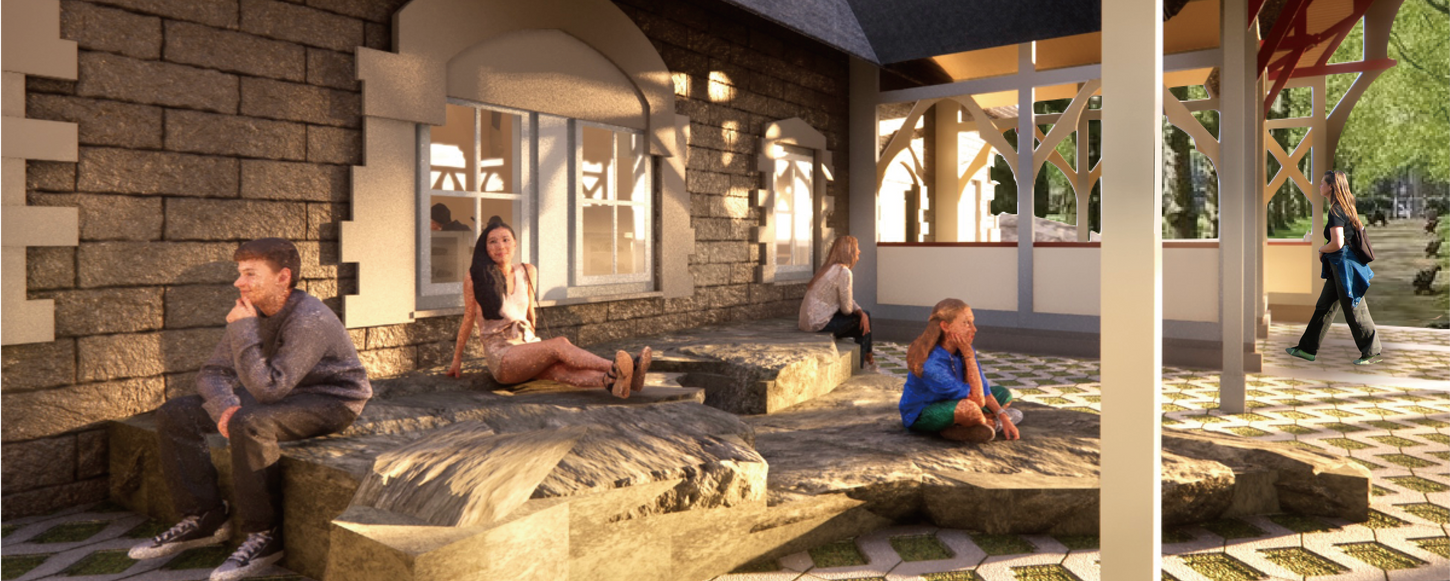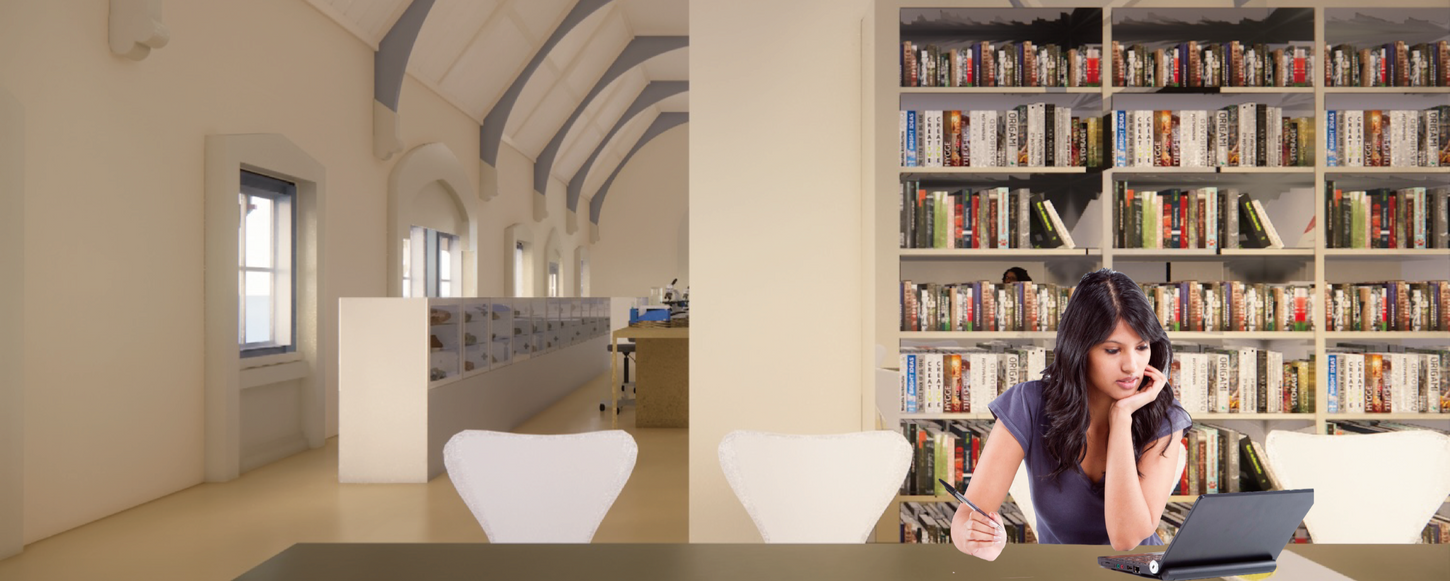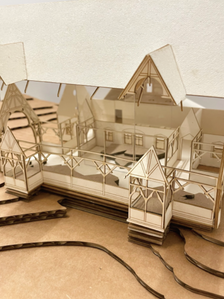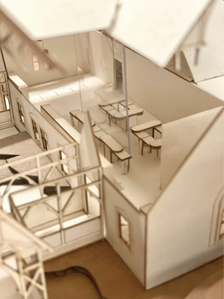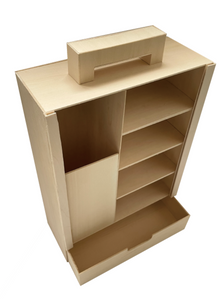Central Park Geology Lab
The geology lab as a dynamic, educational space that honors the site's heritage and inspires environmental stewardship

This project originated from the concept of "fluidity." With my envisioned fluidity, I planned every aspect of the user experience and the program.
Through exploring fluidity, I decided to pursue a project on a geological research lab. The Central Park geology lab is a hands-on research and education center dedicated to the study of rocks indigenous to central park. The lab offers digital and analog technologies and provides a platform for creative inquiry into potential artistic and scientific material applications.
Rhino, and Enscape used
Physical Model 1/8” = 1’-0” and Field Trip Geology kit 1” = 1’-0”
Idea Concept Collage
Fluidity


I concluded the essence of fluidity is the capacity of materials to transform. Whether shaped by the relentless forces of nature, as exemplified in the ever-changing weather, or by intentional human interventions, the common thread is the dynamic interplay with external influences. The material serves as a responsive medium, vividly embodying the inherent capacity for change and adaptation. This fluidity, especially evident in stone, signifies a material that evolves alongside history, continuing to be a dynamic element in architecture influenced by the unique characteristics of each region, making it an intriguing and ever-changing material to work with.

Site and Geology Background
Why Manhattan?
It's uncommon to encounter a city quite like New York, where the blend of urban and natural environments is so seamlessly integrated. This distinctive characteristic, the interaction between people and nature, is prominently displayed throughout the city, exemplified by New York's architectural landscape and the presence of Central Park.
Geology of Manhattan


The depth and composition of Manhattan Schist directly influence the city's skyline. Areas where the schist is closer to the surface, like Midtown Manhattan, feature dense clusters of skyscrapers. In contrast, areas with deeper bedrock, like Greenwich Village, have fewer tall buildings. The practicality of building skyscrapers in New York City is heavily influenced by the depth of the bedrock. Building foundations must reach solid bedrock for stability, which can be challenging in areas with deep bedrock.
Metamorphic rocks change due to heat, pressure, or other processes.
• • •
-
Manhattan Schist is a key rock in NYC, formed during mountain- building around 450 million years ago
-
Hartland Schist, found in Manhattan and The Bronx, reveals ancient oceanic rocks
-
Wallomsac Schist in the Taconic Mountains shares insights into the region's geological past
-
Inwood Marble, seen in Manhattan and rivers, shows evidence of ancient marine environments
The Dairy Visitor Center and Gift Shop
E 65th St, New York, NY 10065

Elevation Drawing
There are no drawings published on the Internet, so I visited the site and drew the elevation in rough dimensions.
Design
This site maximizes the interaction with nature, offering an especially great view of the large schist formations and an intimate connection with nature in the charming pavilion. Preserving the existing building, the interior maintains a clean, bright atmosphere suitable for a laboratory space, while the outside provides a lively and comfortable environment, enhancing the experience of observing the nature.
The building features a striking resemblance between its exterior and interior structures. Inside, the design takes on a minimalist approach, simplifying the interior compared to the elaborate exterior. Circulation and the positioning of key programs are mirrored, creating a clear path through vertical and short horizontal movements. Additionally, important programs are centrally positioned, with seating predominantly centralized.


Users and Programs
The Geology Lab aims to deepen students' understanding of natural forms, structures, and materials found in the park's geological features. It targets students majoring in geology, architecture, and material engineering, allowing them to expand their knowledge in their respective majors and related fields. However, it is not limited to these majors; anyone interested in the field is welcome. Industry professionals also visit as mentors.
The lab offers a research program that serves as a guideline, with students able to choose courses based on their interests. Field trips provide direct interaction and are open to the public, allowing everyone to explore the schists, even if they are not part of the field trip.

Laboratory Materials Management
Including laboratory equipment, this space is used to list and organize materials necessary for experiments
Hands-On Science Program

Field Trip and Workshop

People come together to uses small machines like microscopes or conduct chemical experiments on a laboratory table
Preparation for Field Trip and Guest SpeakerWorkshop

The benefits that students gain through learning
Architecture
-
Study geological characteristics of different stones
-
Explore how geological features influence stone use in construction Learn about sustainable design practices using stones
-
Explore the use of stone pigments in architectural design
-
Study biomimicry in design inspired by natural patterns
-
Engage in art and design research projects related to stones and materials
User Distribution Diagram
Geology
-
Study the geological history and formations of Central Park
-
Gain insights into the forces that have shaped the park's landscape
-
Understand how geological characteristics influence architectural design
-
Learn about the properties and behavior of different stones
-
Gain practical experience in working with different geological materials
-
Develop a deeper appreciation for the earth's resources and the importance of sustainability
Pavilion
The pavilion offers a space where visitors can connect with nature by providing views of the outdoor scenery. It serves as a place for them to relax while also intriguing their curiosity about the interior. Located near a large outcrop, it allows for natural observation of the rock formations. To enhance this experience, special seating was designed to mimic the patterns of the outcrop, encouraging visitors to sit. With multiple levels, visitors can comfortably sit in their preferred way.

Diagram of the Final Pattern

5 different tracings of the schists and the combined result

From the combined pattern of five outcrops, three layers were extracted
Process of the Final Pattern
Lab Table
To overcome the limitation of a small space and enhance communication, I designed a lab table with two movable table tops pivoting around a central one. This table is typically used by three people and can be connected without limiation of number, although in this space, two tables are joined together. This layout promotes smoother group communication. The linear arrangement is the most spatially efficient, particularly convenient for accommodating larger groups, especially when working with an instructor.

Flexibility of the Pivot Lab Table

Group Arrangement:
Having a class
Individual:
Doing own research project and small group

Group Arrangement
Individual
Arrangement of the Pivot Lab Table
Central Park Geology Lab Website
and Process Book
I have created a website where users can access a field trip map, research program information, details about employees, and the reason behind the creation of this site.
Click or Scan this QR code
Click to view and download Process Book


